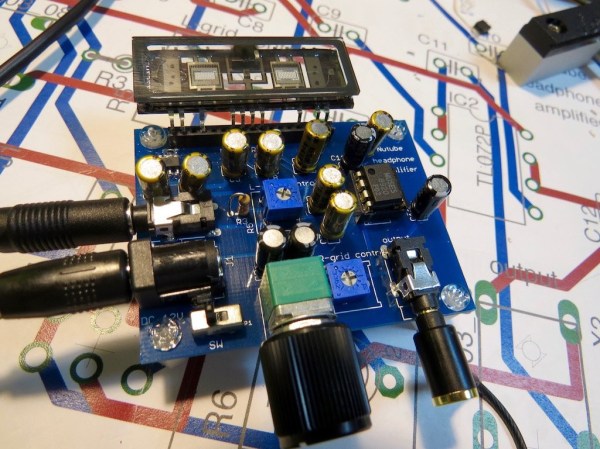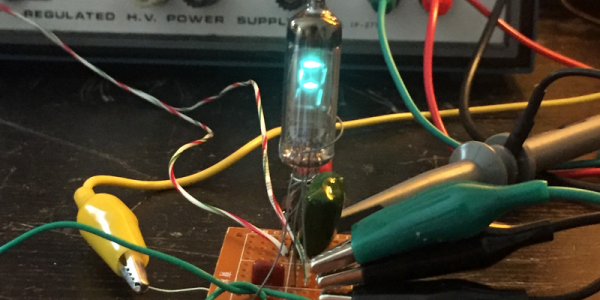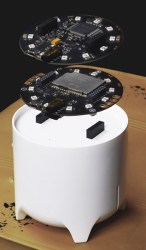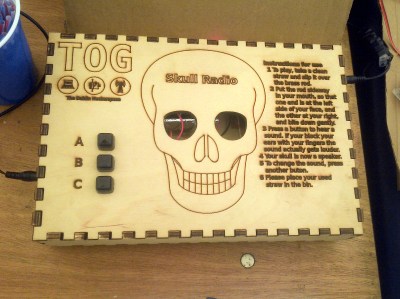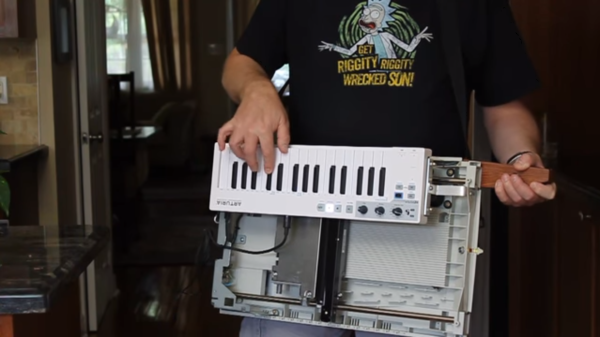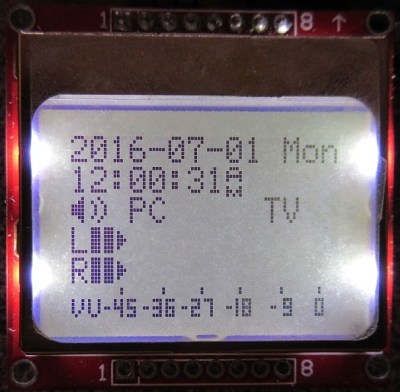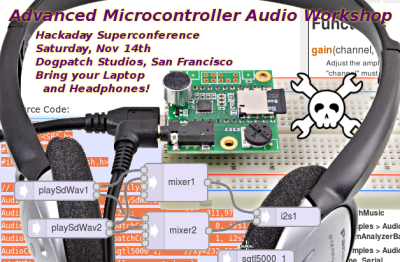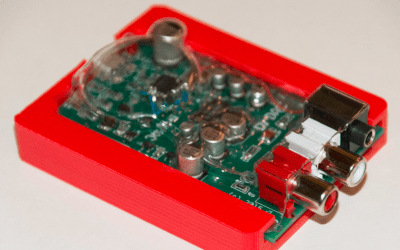This isn’t the first time we’ve seen DIYers sending music over a laser beam but the brothers [Armand] and [Victor] are certainly in contention for sending the music the longest distance, 452 meter/1480 feet from their building, over the tops of a few houses, through a treetop and into a friend’s apartment. The received sound quality is pretty amazing too.
In case you’ve never encountered this before, the light of the laser is modulated with a signal directly from the audio source, making it an analog transmission. The laser is a 250mW diode laser bought from eBay. It’s powered through a 5 volt 7805 voltage regulator fed by a 12V battery. The signal from the sound source enters the circuit through a step-up transformer, isolating it so that no DC from the source enters. The laser’s side of the transformer feeds the base of a transistor. They included a switch so that the current from the regulator can either go through the collector and emitter of the transistor that’s controlled by the sound source, giving a strong modulation, or the current can go directly to the laser while modulation is provided through just the transistor’s base and emitter. The schematic for the circuit is given at the end of their video, which you can see after the break.
They receive the beam in their friend’s apartment using solar cells, which then feed a fairly big amplifier and speakers. From the video you can hear the surprisingly high quality sounds that results. So check it out. It also includes a little Benny Hill humor.
Continue reading “Sending Music Long Distance Using A Laser”


